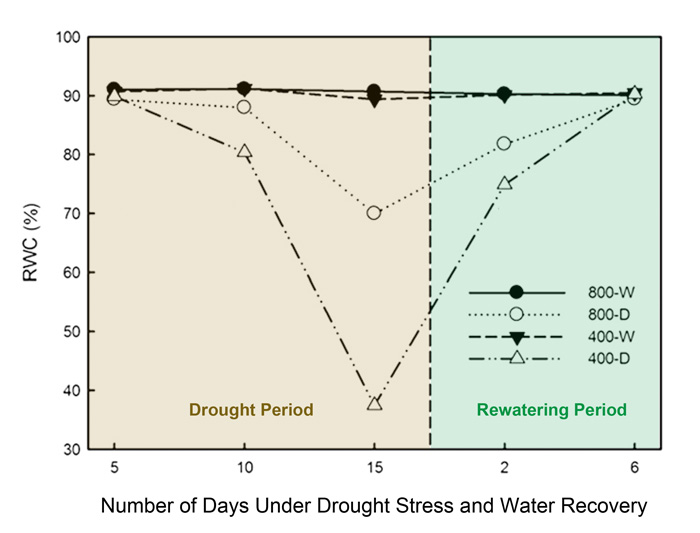| Tweet | Follow @co2science |
Paper Reviewed
Chen, Y., Yu, J. and Huang, B. 2015. Effects of elevated CO2 concentration on water relations and photosynthetic responses to drought stress and recovery during re-watering in tall fescue. Journal of the American Society of Horticultural Science 140: 19-26.
Introducing their study, Chen et al. (2015) write that "drought stress is one of the most detrimental abiotic stresses for plant growth," in that it "leads to stomatal closure and reduces photosynthesis resulting from restricted CO2 diffusion through leaf stomata and inhibition of carboxylation activity," as described by Flexas et al. (2004). And they thus note that "minimizing cellular dehydration and maintaining active photosynthesis are key strategies for plant survival or persistence through dry-down periods," as is described in more detail by Nilsen and Orcutt (1996).
Intrigued by the serious problems faced by plants due to drought stress, the three researchers wondered if they might possibly be reversed by some of the positive effects of atmospheric CO2 enrichment. And, therefore, they grew a cool-season grass -- tall fescue (Festuca arundinacea Schreb. cv. Rembrandt) -- in controlled-environment chambers maintained at either 400 or 800 ppm CO2 under both well-watered (control) conditions or subjected to drought stress followed by re-watering.
This work revealed, in the words of the three scientists, that (1) "elevated CO2 reduced stomatal conductance and transpiration rate of leaves during both drought stress and re-watering," that (2) "osmotic adjustment and soluble sugar content were enhanced by elevated CO2," and that (3) the "elevated CO2 enhanced net photosynthetic rate with lower stomatal conductance but higher Rubisco and Rubisco activase activities during both drought and re-watering." And what was the end result of these several changes?
Chen et al. conclude that "the mitigating effects of elevated CO2 on drought inhibition of photosynthesis and the enhanced recovery in photosynthesis on re-watering were mainly the result of the elimination of metabolic limitation from drought damages associated with increased enzyme activities for carboxylation."

Changes in leaf relative water content (RWC), a good indicator of leaf hydration status and the level of drought tolerance, of tall fescue in response to 15 days of drought stress and 6 days of rewatering under ambient (400 ppm) or elevated CO2 concentration (800 ppm). Legend key: 800-D = drought-stressed plants under elevated CO2 concentration, 800-W = well-watered plants under elevated CO2 concentration, 400-D = drought-stressed plants under ambient CO2 concentration and 400-W = well-watered plants under ambient CO2 concentration.
References
Flexas, J., Bota, J., Loreto, F., Cornic, G. and Sharkey, T.D. 2004. Diffusive and metabolic limitations to photosynthesis under drought and salinity in C3 plants. Plant Biology 6: 269-279.
Nilsen, E.T. and Orcutt, D.M. 1996. The Physiology of Plants Under Stress. Wiley, New York, New York, USA.
Posted 30 December 2015



